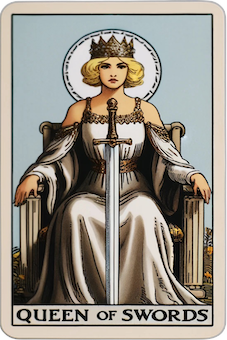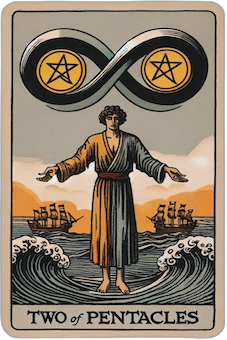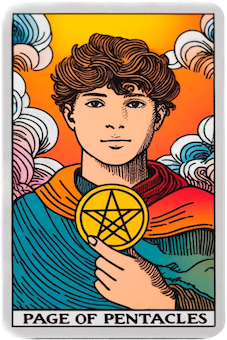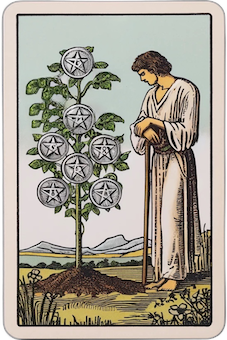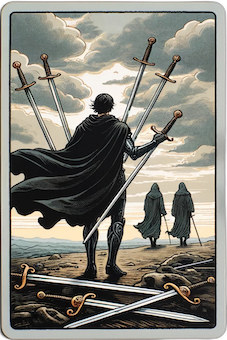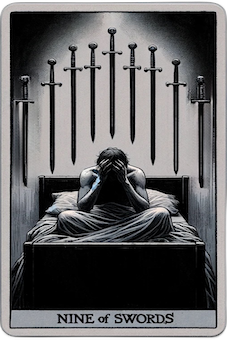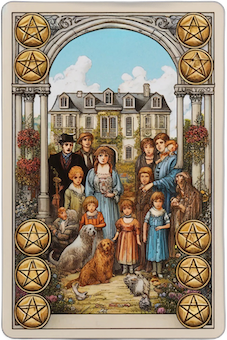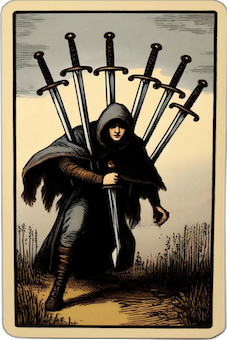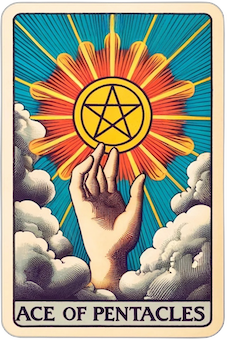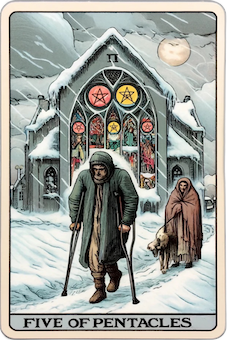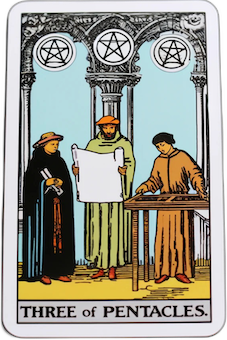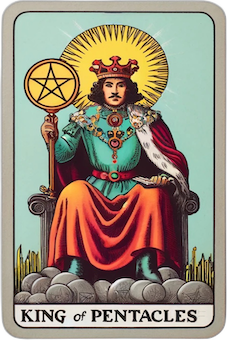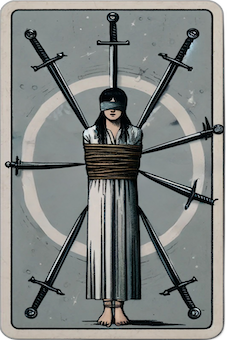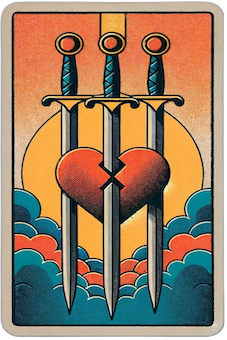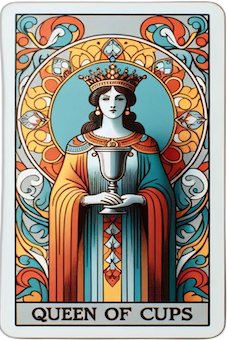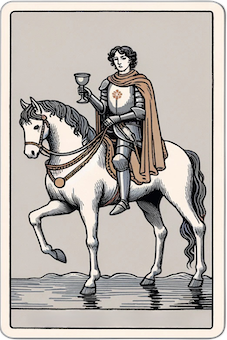The Mystical World of Tarot: Understanding Ancient Symbols for Modern Guidance
In the realm of divination and self-discovery, few tools have captured the human imagination quite like the tarot. With its rich history spanning centuries and its beautiful, symbol-laden cards, tarot continues to offer insight, guidance, and reflection to those who seek its wisdom. Whether you're a seasoned practitioner or simply curious about this ancient art, understanding the profound symbolism embedded within each card can transform a simple reading into a powerful journey of self-discovery. This comprehensive exploration will take you through the mystical world of tarot symbolism, revealing how these ancient images continue to resonate with our modern psyches.
The Origins and Evolution of Tarot Symbolism
Tarot's origins remain somewhat mysterious, though most scholars agree the cards emerged in 15th century Italy, initially as playing cards for nobles. What began as entertainment gradually evolved into a complex system of divination and psychological insight. The symbolism we recognize today was largely standardized in the late 19th century with the creation of the Rider-Waite deck, illustrated by Pamela Colman Smith under the direction of mystic Arthur Edward Waite. This iconic deck established many of the visual elements that would become foundational to modern tarot interpretation.
The beauty of tarot lies in its universal appeal – the symbols transcend cultural and religious boundaries, speaking directly to the human subconscious. Each card contains multiple layers of meaning, with symbols drawn from various mystical traditions including Kabbalah, alchemy, astrology, and numerology. Together, these elements create a comprehensive language that addresses the full spectrum of human experience, from mundane daily concerns to profound spiritual questions.
Understanding the Structure: Major and Minor Arcana
The traditional tarot deck consists of 78 cards divided into two main sections: the Major Arcana and the Minor Arcana. This structure isn't arbitrary but represents the balance between significant life events and everyday experiences that shape our existence.
The Major Arcana contains 22 cards that represent significant archetypal forces and pivotal moments in one's spiritual journey. Often referred to as "trump cards," they symbolize major life lessons, karmic influences, and spiritual truths. When these cards appear in readings, they typically point to substantial life changes, important decisions, or significant personal growth. The Major Arcana follows the "Fool's Journey" – a metaphorical path that begins with innocence (The Fool, card 0) and culminates in wholeness and completion (The World , card 21). This journey mirrors the human experience of psychological and spiritual development, making the Major Arcana particularly powerful for self-reflection and understanding life's greater purpose.
The Minor Arcana, with its 56 cards, addresses the more mundane aspects of daily life. These cards reveal the challenges, opportunities, emotions, and circumstances we encounter regularly. While perhaps less dramatic than the Major Arcana, these cards are equally important, as they illuminate how we navigate our everyday reality. Through the Minor Arcana, we gain insight into the practical tools we have at our disposal for handling life's continuous flow of experiences.
The Four Elements: Understanding the Minor Arcana Suits
The Minor Arcana is further divided into four suits, each associated with one of the classical elements: Earth (Pentacles), Water (Cups), Fire (Wands), and Air (Swords). This elemental correspondence provides the foundation for understanding the energy and focus of each suit.
Pentacles embody the element of Earth, grounding us in the material realm. These cards speak to our relationship with the physical world – our bodies, possessions, finances, and career. When Pentacles appear prominently in a reading, they often indicate a need to address practical matters or suggest that material concerns are currently significant. The energy of Pentacles is steady and patient, reminding us that tangible results require consistent effort and practical wisdom. In our modern context, Pentacles might relate to job security, investment decisions, or the management of physical resources. The earthy nature of this suit also connects to our sense of security and how we establish stability in an ever-changing world.
Cups correspond to the element of Water, flowing through the emotional landscapes of our lives. These cards reveal our feelings, relationships, creativity, and intuition. The appearance of numerous Cup cards suggests that emotional matters are at the forefront – perhaps a relationship requires attention, or inner emotional processing is needed. Water's fluid nature reminds us that emotions naturally ebb and flow; resistance often creates suffering, while acceptance brings peace. In contemporary life, Cups might relate to romantic partnerships, family dynamics, artistic expression, or the development of emotional intelligence. This suit encourages us to honor our feelings as valuable messengers rather than dismissing them as irrational or inconvenient.
Wands channel the element of Fire, igniting our passion, inspiration, creativity, and spiritual growth. When Wands dominate a reading, they point to areas where energy is expanding, where new beginnings are possible, or where inspiration is calling. Fire's transformative nature reminds us that growth often requires burning away the old to make space for the new. In today's world, Wands might relate to entrepreneurial ventures, creative projects, spiritual practices, or situations requiring courage and enthusiasm. This suit encourages bold action aligned with our deepest values and authentic desires.
Swords represent the element of Air, cutting through confusion with the clarity of thought. These cards address our mental processes, communication, conflict, and decision-making. A preponderance of Swords often indicates intellectual challenges, difficult decisions, or the need to communicate precisely. Air's invisible yet powerful nature reminds us that thoughts, though intangible, profoundly shape our experience of reality. In modern contexts, Swords might relate to academic pursuits, legal matters, ethical dilemmas, or technological innovations. This suit encourages discernment and critical thinking while cautioning against the mind's tendency toward anxiety and overthinking.
Numerical Symbolism: The Hidden Language of Tarot
Beyond the suits, each numbered card in the Minor Arcana carries specific vibrational energy based on numerological principles. Understanding these numerical patterns adds another layer of depth to tarot interpretation.
Aces (represented by the number 1) signify new beginnings, potential, and the pure essence of their suit's element. They contain the seed of possibility, the initial spark from which all else grows. When an Ace appears, it often signals an opportunity to start fresh in an area related to its suit. The Ace of Cups might suggest the beginning of a new emotional chapter or relationship, while the Ace of Pentacles could indicate a new job or financial opportunity. The energy of Aces is powerful yet untested – they represent potential rather than achievement.
Twos introduce the concept of duality, balance, and choice. After the initial spark of the Ace, we must now navigate the first decision points and establish equilibrium. The Two of Wands asks us to choose a direction for our creative energy, while the Two of Swords presents an intellectual or moral dilemma requiring careful consideration. This numerical vibration reminds us that life rarely offers simple, singular paths but instead presents us with choices that shape our journey.
Threes represent expansion, growth, and the first manifestation of results. The initial potential of the Ace and the choices of the Two now produce tangible outcomes. The Three of Pentacles shows collaborative achievement in the material world, while the Three of Cups celebrates emotional connections and community. This numerical energy contains both accomplishment and the first awareness of complexity as binary choices evolve into more nuanced situations.
Fours bring stability, structure, and foundation-building. After the expansion of the Three, we need to consolidate and establish order. The Four of Wands celebrates the creation of a stable platform for future growth, while the Four of Swords suggests the need for mental rest and recovery before proceeding. This numerical energy can feel restrictive after the expansive Three, but it provides necessary support for sustainable progress.
Fives introduce challenge, conflict, and necessary disruption. The stable structures of the Four now face tests that reveal their weaknesses. The Five of Pentacles might bring financial hardship, while the Five of Wands shows competitive tensions. While often uncomfortable, this numerical energy facilitates growth by highlighting areas that require adaptation or transformation. Without the challenges of the Five, we might remain in comfortable but limiting patterns.
Sixes offer harmony, balance, and recovery after the turbulence of the Five. This number represents adaptation and the rewards that come from successfully navigating challenges. The Six of Cups brings emotional healing through compassionate connection, while the Six of Pentacles establishes a more balanced approach to material resources. This numerical energy provides a breathing space – not the end of the journey, but a harmonious plateau that validates our efforts.
Sevens present complexity, reflection, and evaluation. After the temporary balance of the Six, deeper questions emerge that require introspection and strategic thinking. The Seven of Pentacles asks us to evaluate our material progress, while the Seven of Cups confronts us with multiple possibilities that may include illusions. This numerical energy often feels uncertain, as it requires us to look beyond surface appearances and make nuanced assessments.
Eights bring intensification, momentum, and mastery through experience. The reflective energy of the Seven now transforms into focused action and accelerated development. The Eight of Wands shows swift movement toward goals, while the Eight of Swords reveals the mental restrictions that limit our progress. This numerical energy demands courage and commitment as we approach the completion of a cycle.
Nines signify culmination, fulfillment, and the height of development within each suit. They represent mastery of the element's lessons, though this mastery may bring both rewards and unexpected complexities. The Nine of Pentacles celebrates material abundance and self-sufficiency, while the Nine of Swords reveals the burden of excessive mental activity. This numerical energy carries a bittersweet quality, as culmination implies that change is imminent.
Tens mark completion, transition, and the exhaustion of a cycle. They represent both an ending and the seeds of a new beginning. The Ten of Cups shows emotional fulfillment in relationships, while the Ten of Swords depicts the complete collapse of a mental construct or belief system. This numerical energy reminds us that all cycles eventually conclude, making space for new experiences.
Color Symbolism: The Visual Language of Tarot
The color palette employed in tarot imagery isn't merely decorative but carries profound psychological and symbolic meaning. Traditional tarot decks utilize colors deliberately to evoke specific emotions and convey deeper messages that might escape conscious awareness.
White appears throughout tarot imagery to symbolize purity, spiritual connection, and new beginnings. When white dominates a card, it often suggests clarity, innocence, or divine guidance. In The Fool card, white often appears in clothing or flowers, highlighting the character's untainted potential and openness to experience. This color asks us to approach situations with an open mind, free from preconceptions or judgment.
Red signifies passion, vitality, and primal energy throughout the tarot. It appears prominently in cards dealing with action, courage, or intense emotion. The Emperor's red robes symbolize his active leadership and authoritative presence, while red elements in the Tower card emphasize the transformative power of sudden change. This color reminds us of our fundamental drives and the life force that propels us forward, even in challenging circumstances.
Blue conveys tranquility, depth, and emotional wisdom in tarot imagery. Cards featuring significant blue elements often relate to intuition, dreams, or the subconscious mind. The High Priestess typically wears blue, symbolizing her connection to hidden knowledge and emotional depths. This color encourages us to trust our intuition and recognize the wisdom available beyond rational thought.
Green represents growth, healing, and connection to nature throughout the tarot. Cards with prominent green elements often suggest renewal, prosperity, or the nurturing aspects of life. The Empress frequently appears surrounded by green vegetation, symbolizing her role as the abundant provider and nurturer. This color reminds us of our fundamental connection to the natural world and the cyclical patterns of growth and renewal.
Purple appears in tarot to signify spiritual awareness, mystical experiences, and transformation. Cards featuring purple often relate to intuitive gifts, psychic abilities, or significant spiritual insights. The Nine of Pentacles sometimes features purple grapes, suggesting that material success can support spiritual development when approached mindfully. This color encourages us to look beyond material concerns to the deeper meaning and purpose of our experiences.
Court Cards: Personifications of Elemental Energy
The court cards – Pages, Knights, Queens, and Kings – represent the human embodiment of each suit's elemental energy. These cards often reflect aspects of ourselves, people in our lives, or approaches we might take in specific situations.
Pages embody the novice energy of their suit, representing new learning, curiosity, and messages. They approach their element with fresh eyes and enthusiasm, sometimes lacking experience but compensating with eagerness and potential. The Page of Cups might represent emotional openness and creative beginnings, while the Page of Swords suggests intellectual curiosity and the desire to communicate new ideas. In readings, Pages often herald messages, opportunities for learning, or the need to adopt a beginner's mindset.
Knights channel the active, dynamic qualities of their suit, often representing movement, pursuit, and dedication to a cause. They have more experience than Pages but may lack the balance and wisdom of Queens and Kings. The Knight of Wands pursues passionate interests with enthusiasm and courage, while the Knight of Pentacles methodically works toward material goals with unwavering determination. In readings, Knights can indicate approaches to challenges, transitional periods, or the arrival or departure of people or opportunities.
Queens embody the receptive, nurturing mastery of their element, representing emotional intelligence, intuition, and inner authority. They have achieved maturity and balance in their domain while maintaining connection to themselves and others. The Queen of Wands radiates confident creativity and inspirational leadership, while the Queen of Swords exercises clear discernment and intellectual honesty. In readings, Queens often represent aspects of ourselves we might develop, supportive influences, or approaches that balance action with receptivity.
Kings represent the projective, external mastery of their element, symbolizing authority, responsibility, and accomplished wisdom. They have achieved control over their domain and exercise their power with intention. The King of Cups masters emotional wisdom while maintaining appropriate boundaries, while the King of Pentacles demonstrates practical achievement and reliable stewardship of resources. In readings, Kings may indicate leadership roles, external authority figures, or the need to take command of a situation with confidence and expertise.
Applying Tarot Symbolism in Modern Life
The enduring relevance of tarot stems from its ability to adapt to changing times while maintaining connection to timeless human experiences. Today's tarot practitioners find numerous applications for this ancient wisdom in addressing contemporary challenges.
Psychological self-reflection represents one of tarot's most valuable modern applications. Many therapists and counselors incorporate tarot imagery into their practice, recognizing the cards' ability to bypass conscious defenses and access deeper psychological material. The archetypes represented in tarot connect directly to the collective unconscious described by Carl Jung, offering a visual language for exploring shadow aspects, internal conflicts, and potential for growth. When approached with psychological awareness, tarot becomes a mirror reflecting our inner landscape rather than a mysterious fortune-telling device.
Decision-making support constitutes another practical application of tarot symbolism. When facing complex choices with numerous variables, the structured system of tarot can help organize thoughts, consider different perspectives, and identify underlying values that should guide our decisions. Rather than providing simplistic answers, tarot encourages comprehensive exploration of situations, helping us recognize factors we might otherwise overlook due to bias or habit.
Spiritual practice and mindfulness find natural expression through tarot work. The contemplative nature of card reading – the careful observation of symbols, the consideration of multiple meanings, the integration of intuitive insights – cultivates present-moment awareness and spiritual receptivity. Many practitioners incorporate tarot into meditation practices, using cards as focal points for contemplation or as gateways to deeper states of consciousness.
Creative inspiration flows abundantly from tarot imagery. Writers, artists, musicians, and other creative professionals often turn to tarot when seeking fresh perspectives or breakthrough ideas. The rich symbolism and archetypal narratives contained in the cards can spark innovative connections and imaginative leaps that might not emerge through linear thinking alone.
Conclusion: The Living Language of Symbols
The symbolic world of tarot continues to evolve while remaining rooted in ancient wisdom traditions. As we engage with these powerful images, we participate in a living conversation that has unfolded across centuries, connecting us with seekers from diverse cultures and eras. The cards speak a language that transcends rational limitations, accessing deeper currents of meaning and intuitive understanding.
Whether approached as divination, psychological tool, spiritual practice, or creative resource, tarot offers a mirror reflecting both universal human experiences and our unique personal journeys. The symbols contained within each card create bridges between conscious and unconscious awareness, between analytical thinking and intuitive knowing, between individual experience and collective wisdom. In our increasingly complex and fragmented world, such integrative tools become ever more valuable.
The journey into tarot symbolism never truly ends – each new reading brings fresh insights, each symbol reveals additional layers of meaning, and each person discovers unique resonances with particular cards or combinations. This inexhaustible quality ensures that tarot remains relevant and vital, a perennial resource for human growth and understanding. As we develop our relationship with these ancient symbols, we cultivate wisdom that encompasses both timeless truths and contemporary applications, finding guidance that speaks directly to our modern lives while connecting us to the enduring questions of human existence.



